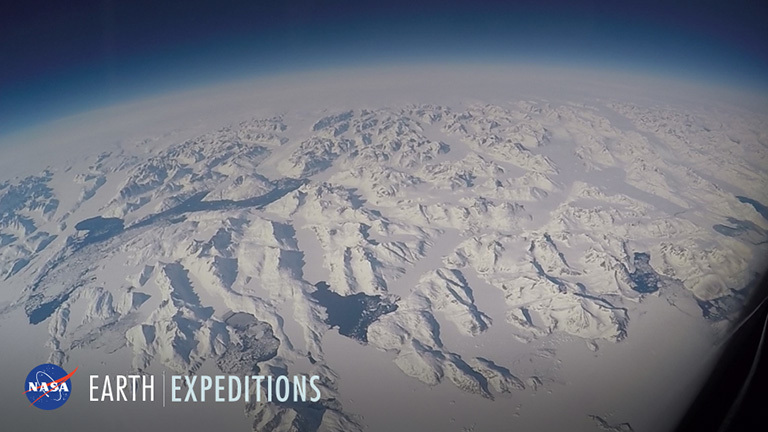Ask NASA Climate | March 30, 2016, 06:35 PDT
Sorrow and excitement
Watching global warming in real-time from a NASA plane

This shot of Greenland was captured from the window of NASA's modified G-III airplane for the Oceans Melting Greenland (OMG) campaign.
Hey, readers: Our team reads your comments. We share them at our meetings. Sometimes they make us laugh, or sigh, or even scratch our heads.
We see that you see us. Yay for connecting!
And this is how I know you’ve noticed NASA’s latest airborne campaign, where NASA scientists fly a bunch of NASA instruments on a NASA airplane to study more details about Earth. Cool, right?
Lately, we’ve been flying around the edge of Greenland collecting radar data about how much its glaciers are melting into the sea. And the most common comment we get goes something like “Wheee! Let’s go. Take me with you.” When I told a friend about the possibility of joining the team in the field, she exclaimed, “All expenses paid?”
HAHAHA … no. As if a NASA expedition to Greenland is like a resort vacation instead of a giant heaping pile of hard work.
“When I looked down at the rivers of ice running into the ocean, it was shocking to think about the effects of rising sea levels as far away as California or Antarctica,” said Principle Investigator Josh Willis, two days after returning from his first trip to observe this pristine part of our planet as it melts into the sea and goes bye-bye. “Yet, I had a blast.” Because even though we all probably have many complex emotions about climate change, ice mass loss and sea level rise, we can still simultaneously feel super duper stoked about the chance to fly over the glaciers of Greenland in a freaking NASA plane. “The mountains, the ice, the water and the ice in the water are incredibly striking even though it’s lonely to see it disappearing at the hands of human activity,” he told me.
Yes, emotions are weird, and yes, there’s an awkward contrast or odd juxtaposition between feeling both thrill and grief at the same time.
But that’s life, I guess.
So just in case you’re still envisioning a champagne-swilling, caviar-scoffing, gangsta, hip-hop music video scene, here are a few things that might surprise you about the kind of major effort it takes to get on board NASA’s G-III plane and join the Oceans Melting Greenland field campaign:
Kick booty in a fire-resistant flight suit
A load of gas and no mistakes
Instruments, instruments and more instruments. And did I mention some serious training?
Keep warm, in style
“It’s not a triumph of human achievement that we’re melting the ice sheet,” said Willis. “When you see how huge these glaciers are and this huge chunk of this ice sheet disappearing into the ocean, it’s almost incomprehensible even when you see it from 40,000 feet.”
Wheee.
Find out more about Oceans Melting Greenland here.
View and download an OMG poster/infographic here.
Thank you for your comments.
Laura
Oceans Melting Greenland is part of NASA Earth Expeditions, a six-month field research campaign to study regions of critical change around the world.
